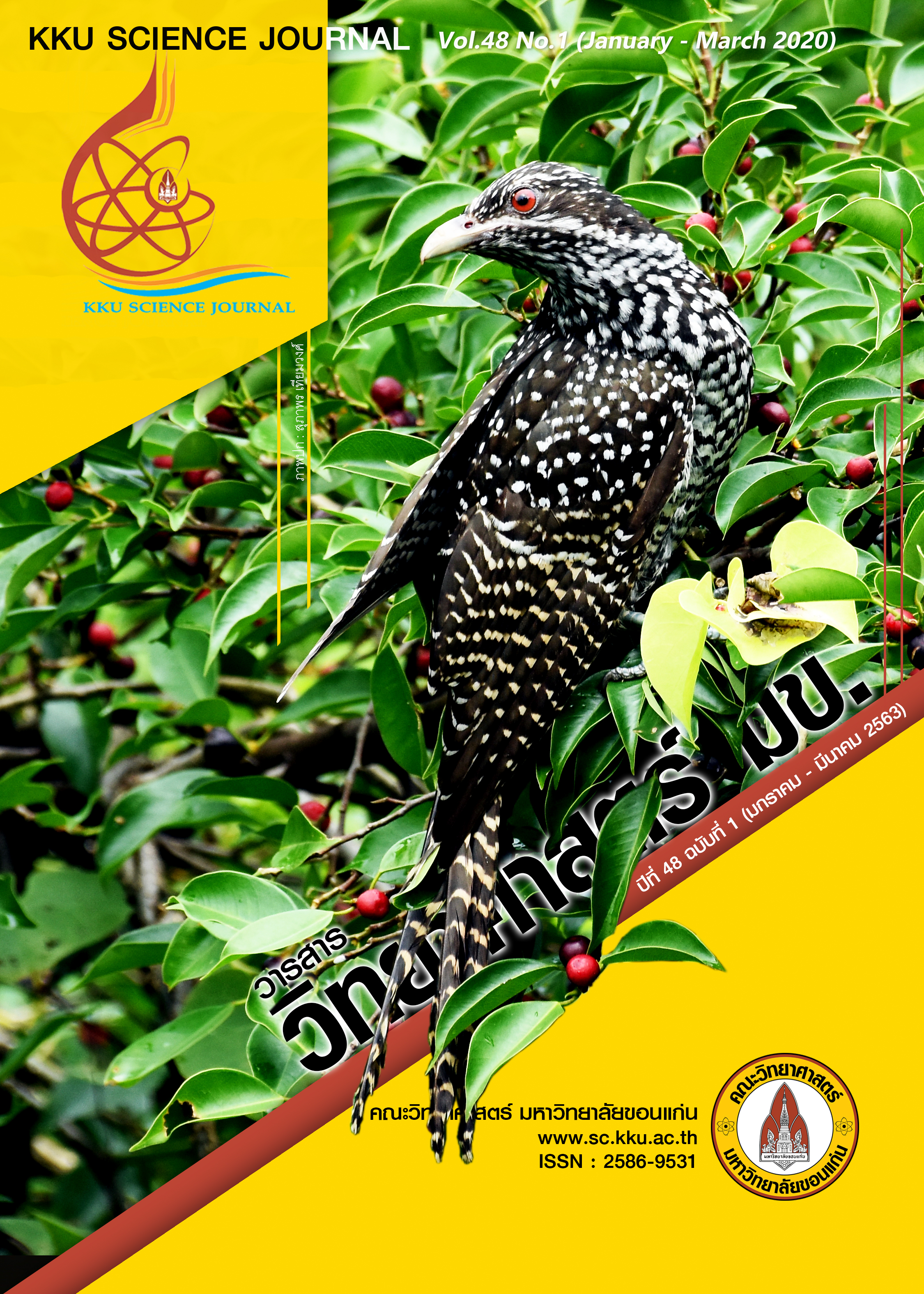Feasibility of Near-Infrared Spectroscopy to Predict the Quality of Fresh Sugarcane Juice
Main Article Content
Abstract
In this study, Near-Infrared spectroscopy (NIRs) was used as a rapid technique to analyze the total soluble solids (TSS) and total sugar content (TS) of 100 fresh cane juice samples. Prior to NIR and reference analyses, the temperature of samples was controlled at 20°C by water bath. NIR spectra of samples were collected in reflectance mode in a wavelength region of 600-2500 nm using an NIR instrument with a liquid cell. Subsequently, the TSS and TS of samples were analyzed according to the AOAC method. Partial least squares (PLS) regression with a full cross-validation method was applied to develop the calibration model. All of the samples for modelling were split into a calibration set (n = 70) and prediction set (n = 30). The results show that the TSS of the samples are from 7.40 to 21.80°Brix, whereas the TS are from 7.05 to 24.13%. The NIR spectra of cane juice samples are dominated by water absorption bands at 1450 and 1950 nm. It is known that sugars display bands in the wavelength region of 1100-1600 nm and 1700-2300 nm. The PLS calibration models with a high predictive performance are devised for TSS and TS with the residual predictive deviation values of 14.47 and 9.50, respectively.
Article Details

This work is licensed under a Creative Commons Attribution-NonCommercial-NoDerivatives 4.0 International License.


